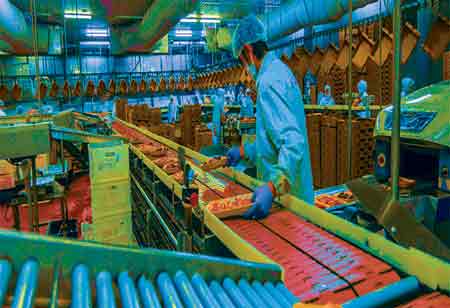THANK YOU FOR SUBSCRIBING
Be first to read the latest tech news, Industry Leader's Insights, and CIO interviews of medium and large enterprises exclusively from Food and Beverage Tech Review
New Technologies in the Food and Beverage Sector
Enterprises across all industries are embracing digital transformation.

By
Food and Beverages Tech Review | Friday, December 30, 2022
Stay ahead of the industry with exclusive feature stories on the top companies, expert insights and the latest news delivered straight to your inbox. Subscribe today.
The year 2023 brings new sustainable practices, new tech expectations, and advanced health preferences in the food and beverage industry.
FREMONT, CA: Enterprises across all industries are embracing digital transformation. They are adopting new technology to keep up with market shifts, meet client expectations, and remain competitive.
This trend extends to the food and beverage (F&B) industry, where leaders aggressively seek to enhance their back-end operations while remaining responsive to partner, consumer, and stakeholder requirements.
Listed here are some of the most prominent technological trends in the food and beverage industry:
Robotics facilitate effective food production
Increased food production necessitates intelligent machines in the food and beverage industry. Sixty-seven percent of F&B executives claim that gross throughput increased by an average of 24 percent in 2022, reflecting a 2 percent rise over 2021.
The majority of this rise results from new sales and company, with 33 percent of leaders attributing this increase to overall demand.
However, while demand is increasing, efficiency remains stagnant. Sixty-one percent of F&B leaders stated in the same research that they want to increase production line flexibility, while 55 percent want to expand packaging lines and production facilities.
While some businesses may opt to recruit more employees to satisfy this need, others are evaluating intelligent technologies. Current robots can aid line employees and carry out some of their duties. Because they can accomplish these tasks more quickly and safely than humans, they are frequently deployed to lessen the risk to human workers.
For instance, corporations can deploy robotic butchers to do intricate meat cuts in factories, freeing up team members to perform less hazardous tasks. These robots can also be seen in restaurants, where they cook and prepare food before it is served to customers. From making salads and warming bowls to steaming pasta and plating dinners, they are decreasing labor hours and boosting productivity.
Automation Simplifies Internal Processes
A substantial amount of F&B work occurs behind the scenes. Back-office chores, such as scheduling and personnel, can quickly overburden a business, primarily if these operations are still being managed manually.
Automated technologies, such as enterprise resource planning (ERP) systems for manufacturing, alleviate pressure and manual labor. These cloud-based technologies can automate many administrative and operational activities. This includes food safety and maintenance tasks necessary for industry compliance but can be time-consuming for employees.
Some businesses have implemented online ordering systems to avoid the third-party fees imposed by most takeout and delivery services. Numerous systems incorporate other technologies, such as marketing automation, customer loyalty features, and data analytics, to generate personalized order recommendations.
I agree We use cookies on this website to enhance your user experience. By clicking any link on this page you are giving your consent for us to set cookies. More info







